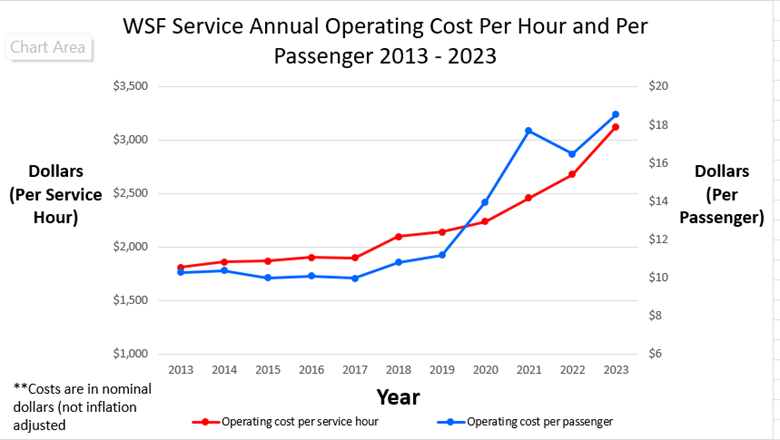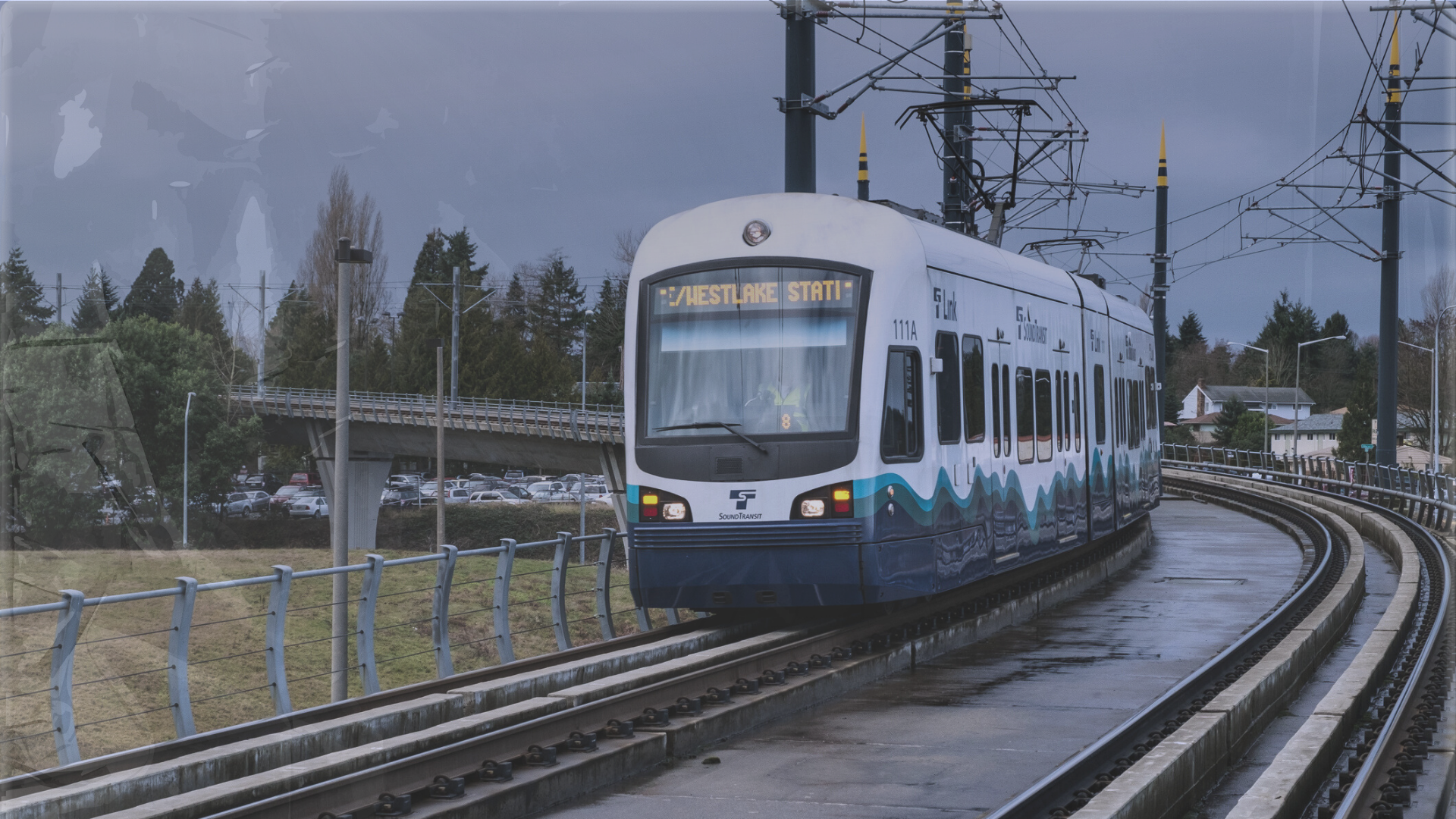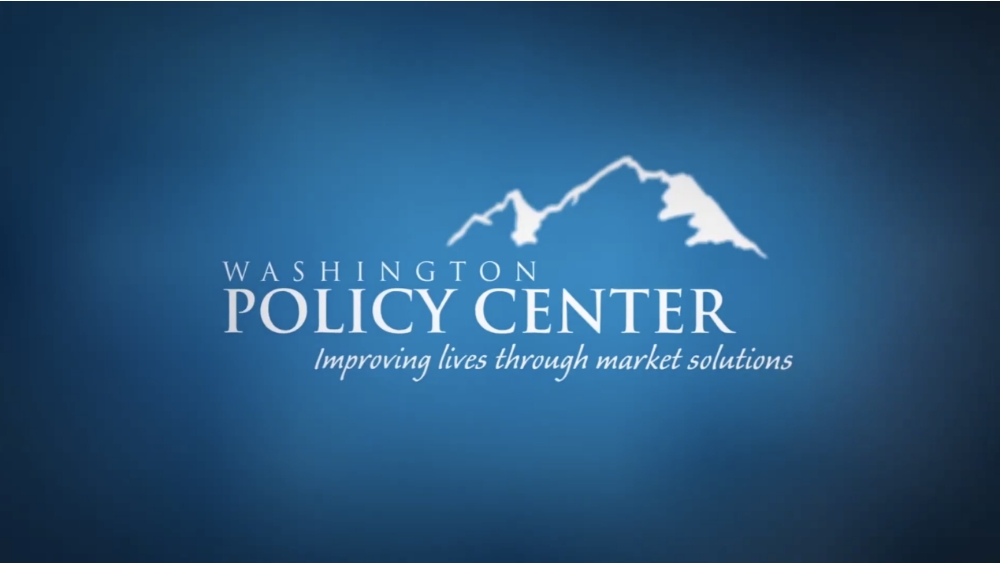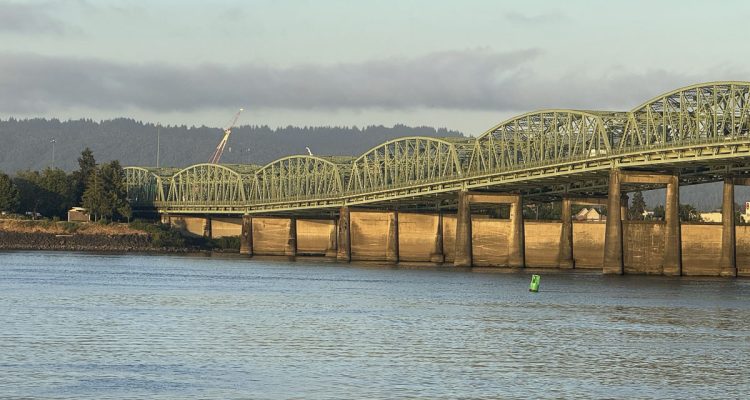At their August meeting the Washington State Transportation Commission approved fare increases for ferry customers. In October fares on all WSF routes will increase by 3%, followed by another 3% increase in May of 2026. The peak season surcharge will also be bumped up to 35% over the regular fare. In addition to the fare increases approved by the Commission, the legislature has enacted an increase in the vessel replacement surcharge, which will rise to one dollar per ticket, and a service fee for customers who pay using credit cards that is expected to add another 3% percent to the cost of riding the ferry.
Before anybody fires off hate mail to the Transportation Commission it should be pointed out the legislature adopts the Ferry System budget. The Commission is then tasked with setting fares consistent with the legislature’s budget action, which for this go-round means adopting fares that are expected to generate a total of a little over $400 million for the biennium. The Commission does not set the Ferry System budget, establish service levels, or negotiate contracts with unions.
It is tempting to think these fare and fee increases will be sufficient to put the Ferry System’s finances on an even keel for many years to come. The trends, however, are not encouraging. While the public and policy makers have focused on enhancing revenue, the bigger challenge is on the cost side of the equation. As can be seen in the graph below, cost per service hour has risen steeply.

In 2017 WSF averaged under $1,900 per hour of ferry service. By 2023 the cost had soared to over $3,000 per hour. Even adjusting for inflation that is a big increase.
The combination of rapidly rising operating costs and flat or decreasing ridership has created a yawning gap between fare revenue and operating expenses. In 2017 WSF covered 75% of its operating costs with fare revenue. By 2023 the ratio had fallen to barely 50%. In dollar terms the gap increased from $58 million to over $160 million. The result is a $100+ million per year hole in the state transportation budget.
The fare and fee increases that will soon go into effect, though substantial, will not be nearly enough to fill the gap. Which means the legislature will need to find additional operating subsidy in a state transportation budget that is already stretched thin.
Why not just raise fares enough to eliminate the budget gap? The increase needed would add about $7 to the price of each ticket. For a family going on a weekend trip to the peninsula that might not be enough to cause a change in travel plans, but for regular commuters and ferry dependent communities the impact would be significant, so much so that ridership, which is still below pre-COVID levels, might level off or even decrease.
There was a time when WSF had little competition, but now that Kitsap Transit and King County both provide fast passenger ferry service on Puget Sound many commuters have options. The trend of working and shopping from home has also created an alternative to traveling by ferry. For south sound residents the Tacoma Narrows bridge, which doesn't charge a toll for west-bound travel, is an uncongested alternative to the Fauntleroy-Southworth run. With these attractive and convenient options now available, a fare increase large enough to fill the budget gap would result in a significant loss of ridership and very strong pushback from communities that depend on ferry service.
Faced with this difficult situation, the legislature should direct more attention to the cost side of the budget equation. Because 80% of WSF’s operating costs are labor, and wage rates are largely determined by exogenous factors over which WSF and legislature have little or no control, cost-containment will need to focus on making more efficient use of the workforce. Given Coast Guard regulations and the nature of most of the jobs involved in vessel operations that is no easy task, but WSF’s much-delayed fleet renewal program offers an opportunity to design vessels that make more efficient use of labor. If the new ferries don’t rein-in the trend of rising operating costs then ferry customers can expect the newly approved fare increases will be just the first of many more in the years to come.






